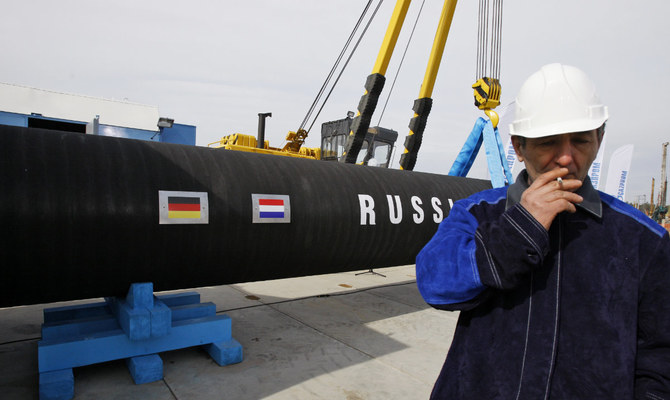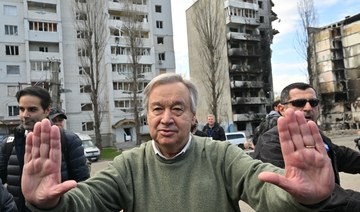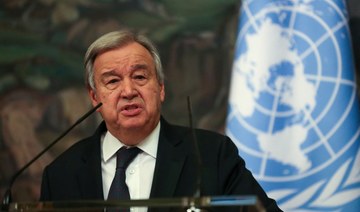FRANKFURT/LONDON: Russia will halt gas supplies via a major pipeline to Europe on Wednesday intensifying an economic battle between Moscow and Brussels and raising the prospects of recession and energy rationing in some of the region’s richest countries.
The maintenance on Nord Stream 1 means that no gas will flow to Germany between 01:00 GMT on Aug. 31 and 01:00 GMT on Sept. 3, according to Russian state energy giant Gazprom.
European governments fear Moscow could extend the outage in retaliation for Western sanctions imposed on it after its invasion of Ukraine and have accused Russian President Vladimir Putin of using energy supplies as a “weapon of war.” Moscow denies doing this.
Further restrictions to European gas supplies would heighten an energy crunch that has already sent wholesale gas prices soaring over 400 percent since last August, creating a painful cost-of-living crisis for consumers and businesses and forcing governments to spend billions to ease the burden.
Unlike last month’s 10-day maintenance for Nord Stream 1, the upcoming work was announced less than two weeks in advance and is being carried out by Gazprom not Nord Stream AG, focusing on the last operating turbine at the station.
Moscow, which slashed supply via Nord Stream 1 to 40 percent of capacity in June and to 20 percent in July, blames maintenance issues and sanctions it says prevent the return and installation of equipment.
Gazprom said the latest shutdown is needed to perform maintenance on the pipeline’s only remaining compressor.
Yet Russia has also cut off supply to Bulgaria, Denmark, Finland, the Netherlands and Poland completely, and reduced flows via other pipelines since launching what Moscow calls its “special military operation” in Ukraine.
“Given events over recent months, we think the market may disregard Gazprom’s comments and start to consider whether the pipeline may not return to service, or at the very least may (be) delayed for any given reason,” said Biraj Borkhataria, Associate Director of European Research at Royal Bank of Canada.
‘ELEMENT OF SURPRISE’
German Economy Minister Robert Habeck, on a mission to replace Russian gas imports by mid-2024, earlier this month said that Nord Stream was “fully operational” and that there were no technical issues as claimed by Moscow.
Klaus Mueller, president of Germany’s network regulator, said that while a resumption of flows would help Germany’s security of supply, no one was able to say what the consequences would be if flows remained at zero.
Europe’s largest economy is making better progress than expected in filling its gas storage facilities, but it’s not enough to get the country through winter, he said.
The reduced flows via Nord Stream have complicated efforts across Europe to fill up vital gas storage facilities, a key strategic goal to make it through the winter months, when governments fear Russia may halt flows altogether.
“It is something of a miracle that gas filling levels in Germany have continued to rise nonetheless,” Commerzbank analysts wrote, adding Germany had so far been successful at buying sufficient volumes at higher prices elsewhere.
In the meantime, however, some Europeans are voluntarily cutting their energy consumption, including limiting their use of electrical appliances and showering at work to save money while companies are bracing for possible rationing.
At 83.26 percent, Germany is already within reach of an 85 percent target for its national gas storage tanks by Oct. 1, but it has warned that reaching 95 percent by Nov. 1 would be a stretch unless companies and households drastically cut consumption.
For the European Union as a whole, the current storage level is 79.94 percent, just short of an 80 percent target by Oct. 1, when the continent’s heating season starts.
Analysts at Goldman Sachs said their base case assumption was that this outage would not be extended.
“If it did, there would be no more element of surprise and reduced revenues, while low (Nord Stream 1) flows and the occasional drop to zero have the potential to keep market volatility and political pressure on Europe higher,” they said.




















